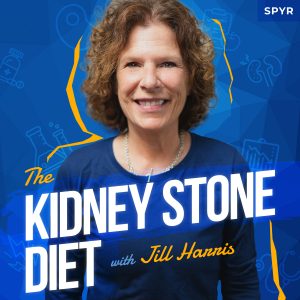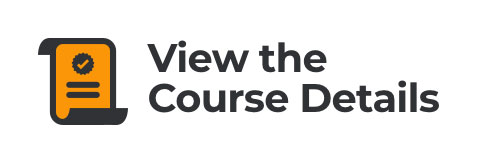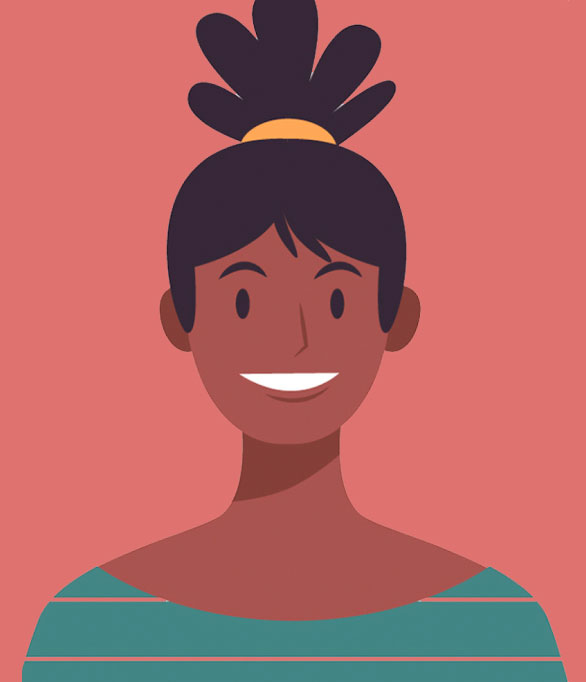In this conversation, Jeff Sarris and Jill discuss the dietary factors that contribute to kidney stones, focusing on the worst foods to avoid and practical guidelines for prevention. They emphasize the importance of understanding oxalate levels in foods and how to manage dietary choices without feeling overly restricted. The discussion highlights the balance between enjoying food and maintaining health, providing listeners with actionable insights for kidney stone prevention.
Takeaways
- The worst foods for kidney stones include high oxalate foods like spinach and rhubarb.
- Understanding oxalate levels is crucial for kidney stone prevention.
- You can have a budget for oxalate intake, allowing for some flexibility in your diet.
- Portion control is key; you don’t have to eliminate all high oxalate foods.
- Calcium can help mitigate the effects of oxalate in the diet.
- Dietary restrictions should not lead to deprivation; balance is important.
- Water intake is essential for kidney stone prevention.
- Focus on reducing sugar and salt in your diet.
- The kidney stone diet is goal-oriented, not overly restrictive.
- You can still enjoy foods like baked potatoes in moderation.
00:00 Introduction to Kidney Stone Prevention
01:22 Understanding Oxalate and Its Impact
05:27 The Worst Foods for Kidney Stones
11:27 Portion Control and Dietary Flexibility
14:22 Conclusion and Key Takeaways
What Are the Worst Foods for Kidney Stones?
Jeff Sarris (00:00):
What are the worst foods for kidney stones? Well, let’s talk about that.
We’re going down the rabbit hole, the worst foods for kidney stones, because we’re all here to prevent future stones. But now what are we missing? What are we doing that we may not already be aware of? And for anyone who’s brand new, you can go to kidneystonediet.com where you’re going to see the breakdown of everything related to the Kidney Stone Diet prevention goals. Right on the homepage, you can follow along sort of as we dive into the worst foods for kidney stones.
The Complete List – Not Just the Common Ones
Jill (00:34):
Yep. This is so when I talk about this on Instagram or in Facebook, people will say, “Jill, there’s more foods than what you’re saying.” But I always bring up the foods that are the most common. Most people are not sucking down buckwheat groats. OK, but this is going to be so, you know, Jeff, the complete list that we have research on. Complete list. I’m not just going to say almonds and spinach and cashews and that’s it. Because there are other things. Because there’s always somebody that says, “By the way, lady, I am sucking down buckwheat groats.” OK, I see you, Larry. OK, so this is the complete. You should put that in the title. The complete list.
Now, also in the notes, so you guys know, you can find this link. So make a note of this, Jeff. We do have a high oxalate food list in our resource section at Kidney Stone Diet. I’m getting my information from there. So if you want to look at that, Jeff will put it in the show notes below this video. So you could just click it and see the PDF that Dave made a beautiful copy of. Okay. So our other partner. Okay. So.
Here’s the complete list of worst foods as far as oxalate goes.
The Absolute Worst: Over 500mg
First thing on the list of spinach. First thing on the list of spinach. You all know that. Harvard lists spinach at 547 milligrams per cup. So you each get 100 milligrams of oxalate a day. That’s in your bank. Some of you, if you have malabsorption issues because you have Crohn’s, colitis, you’ve had bariatric surgery, weight loss surgery, some of you, your doctors may have told you 50. Some of you have never had those surgeries and your doctor still told you 50. Some doctors say 30. That’s wrong information. None of you, unless you’ve had the surgeries I just listed, need to lower your oxalate that much. “Well Jill, what’s the difference? I’d rather be lower than higher” because you’re going to limit too many healthy foods.
There will be very few things in life, I will say trust me 100% because what do I know everything? No. Do I know this stuff? Yes, I do. And why do I know this in almost 30 years? We’re at 27 years now next month in a couple weeks. And so now I’m just sick of saying the numbers because I forget it’s almost 30 years. I have been looking at 24-hour urine collections. People come to me. They want me to look at their urine collection so I can explain it really well to them and then they have great talking points with their doctor. I’ll tell them the things to change, then they do a follow-up and I always give them the 100 milligrams of oxalate to have. They’re a little nervous, “How does she know, what do I do,” blah, blah. I tell them, they do it. Their oxalate’s still like a baby. It’s like a baby on the follow-up test. So I’m telling you things not just based on science, but I’m telling you from looking at people’s urine collections every single day what I see. So you can trust this information. I would never as a nurse or as a human being say wrong information. Also, I would say, I think then you’d know. Uh-oh. But this I know.
So you get a hundred milligrams of oxalate a day unless you’ve had those surgeries. So obviously spinach is off the list because it’s over 500 milligrams right there. You’re done. Your bank account is overdrawn.
So right now for all of you listening, I’m putting $100 in your bank account, those of you who have not had those surgeries. And now you get to choose foods however you want. Even if it’s something like beets. “Beets are high, Jill.” Half a cup is 76 milligrams. Maybe you have a cup of beets just because you want to see them in your salad. You chop them up, they make you feel good. It will be a little high oxalate, but you can do it, right? You’re not going to be overdrawn. You’re not going to be over budget with one food.
So what I’m saying is you have a budget, I’m giving you the debit card, you decide how you want to use it. Spinach, done with. No spinach for you. Rhubarb, half a cup of rhubarb, over 500 milligrams of oxalate. That’s done. Swiss chard is another one, too high in oxalate. Buckwheat groats, too high in oxalate. No. Wheat berries, too high in oxalate. No.
The High Ones: 90-100mg Range
Navy beans half a cup 96 milligrams of oxalate too high not worth it. There’s so many other beans you can have. kidneystonediet.com put beans in the search and you’ll get a whole list of beans you can have but navy beans not so much. Now here’s one that really makes people tear up a little baked potatoes. Many people will just forgo them because one baked potato is 92 milligrams of oxalate so you could say “Wow, I can’t ever have a baked potato.” Could you have half? Because then it’s 50 milligrams of oxalate or 45. You can absolutely have half. And just watch your oxalate for the rest of the day. That’s a product that is on the higher side. So I would consume a calcium based beverage, which will help lower the oxalate. Calcium and oxalate will bind together in your intestine, leave through the stool. So I have so many patients that continue having a baked potato.
My Philosophy: Portion Not Perfection
How many times? Have it a couple times a month. Hell, you could have it once a week. Half. Save the other half for your husband or wife. Or save the other half for lunch. “Jill, I’m nervous.” Take away the skin. It’s even less. But to me, the whole point of having a baked potato is the skin. So if I were to have a baked potato, I would eat half. Have it with some calcium and move on with my life. You see, my philosophy, Jeff’s like, “Jesus, here she goes.” Shut up, Jeff.
Jeff Sarris (06:55):
You…
Jill (06:56):
My philosophy is, forget about kidney stones for a second, why have you been on 27,000 diets, you’ve lost 5 million pounds, and you’ve gained 6 million pounds back? Why? Because the diet industry is too restrictive. You can’t have a whole food group, carbs. You can’t have sugar anymore. You can’t have this, you can’t have that. You can’t have a cupcake, you can’t have ice cream. If you do, you’re a disgusting, lazy person. You’re a loser. Come on.
So my philosophy with diet is even though baked potatoes are high, it may bring back, because it’s a very 1970s food, to go to Ponderosa or Sizzler and there’d always be a baked potato bar and we’d all get that. So it could be, I remember when I went with my dad it was special. We would have a baked potato. It could just be that. It could be you love baked potatoes, but you’re not having them anymore with sour cream and cheddar and all the junk you put in it. I am not wanting to take away foods. I’m here to say this is why the kidney stone diet is goal related. Here’s how much sugar, salt. Here’s how much meat. If you eat meat, here’s how much this, this, this. How you get there is up to you. So if you want to spend 45 oxalate dollars for the day on a half a baked potato, God bless, enjoy, have it with calcium. So that’s still on the table. Portion, not perfection. If you have the whole potato, it’s 92. I would not have, that’s not where I would waste my oxalate bucks.
Nuts: The Portion Problem
Almonds for one little ounce. Alexa, how many tablespoons is in an ounce? I think two. Yeah, two tablespoons of almonds, 72 milligrams of oxalate. I take almonds and almond product and almond butter away because most of you are not having two tablespoons. You’re eating half a bag because you’re a diabetic. The dieticians that have almonds as a snack and you went nuts. OK, so I do take almond products away. You could say, “Jill, I’m having a tablespoon a day.” But do you really want to spend 40 milligrams on four almonds? I don’t think so. So I do take those away.
Dark chocolate bar, 68 milligrams, one and a half ounces. Have a square every night if you want. My patients don’t make stones, but they’re getting their calcium needs met. So that’s something that really people can’t live without. “Jill, I like my chocolate.” If you can contain the amount you’re having, some people are like, “You know, if I have one square, Jill, I’m having the bar.” Okay, Fran, not for you. Not in the house it goes. Just like I can’t have Cheez-Its in my house. So you’ve got to know yourself. If you’re going to binge on something, if it’s in your house, don’t bring it in your house. Easiest thing. “Jill, what could I do? I can’t help it. It’s in the house.” You’re acting like the food walked in the house and didn’t even knock. You’re the one buying it, Carol. Knock it off. All right.
Cashews are another one. Two tablespoons is 63 milligrams of oxalate. I don’t know. Do you want four nuts for 63 milligrams of oxalate? I don’t think so.
The 50-60mg Range
Refried beans, a half a cup is 60 milligrams. Miso soup, 60 milligrams. Baked beans, 57 milligrams. So these things you’ll see if you download that PDF that’s under the show notes. These things like the refried beans are half a cup, 60 milligrams. You could say, “Jill, we’re going out for Mexican. I’m going to have 30 milligrams. I’ll just have fourth of a cup because I need to see those in my taco or with my rice.” Okay. So if that’s how you want to spend your oxalate budget, a portion of it, please do. I’m just asking. Don’t go over your hundred. Don’t withdraw the whole hundred. Absolutely fine. Okay.
A lot of people give up this next food, sweet potatoes with the skin. Half a cup is 54 milligrams of oxalate. Okay? So that’s a higher amount. I’ll tell people, I still have sweet potatoes and you darn right I’m having the skin. I have a fourth. That’s my portion size. So I’m actually wasting or spending 25 milligrams of oxalate with my sweet potato because it’s a healthy food. It makes me happy to see it. My favorite color is orange. And so I’m going to make one sweet potato and I’m going to split it in fourths. So I will have it with four meals. That’s how I do it.
We do not take away foods here unless it’s totally warranted like the spinach, rhubarb, buckwheat groats, wheat berries, navy beans. And that’s really it. The other ones I’m going to say, really watch your portions and have that stuff with calcium. French fries, another thing, 45, 49 milligrams of oxalate. There’s no one here that needs to give up french fries. And they’re very salty and all of that, but sometimes a girl needs a burger and fries. So what? Have it. Make your next meal choice a healthy one and get your calcium needs met every day.
The Bottom Line
So you’re going to see there’s a few more foods, but they’re lower on the list now. Now we’re talking about foods in the 50s and 40s. If you have half a portion, you’ll have half the oxalate. If you get all your calcium needs met, no one has to worry about oxalate. Oxalate, I will say it till I’m blue in the face, oxalate is the least important part of the kidney stone diet. Once you take away spinach, rhubarb, buckwheat groats, wheat berry, chia seeds, navy beans, and almonds and cashews just simply because people tend to way overeat those things. Okay? And almonds when I say that and cashews when I say that, everything in that family, cashew butter, cashew milk, cashew nuts. Almonds, almond butter, almond milk, okay? Those things just take them away. There are plenty of milk substitutes that you can have now.
And Jeff, I mean basically that’s it. So there are things on this PDF that will start it with red, absolutely no, and then it goes to orangey, yellow, and portion not perfection. And the PDF does say this, eat these foods occasionally, portion not perfection. And honestly guys, you no longer have to pull out your hair. If I could, and we have a whole page, if you go to kidneystonediet.com, the Oxalate food page, the Oxalate food list, we have so many FAQs about Oxalate on there, all the things that you guys ask. Please look at that page. Jeff built the searchable Oxalate list. So you just have to type in a food and you’ll see it come up and you could see the Oxalate. And also if you haven’t looked at that list for a while and you’re like, “You know, I think after listening to her, I’m limiting a lot of foods. Let me look at that oxalate list, type in what I’m not eating anymore and wish I did and see what the oxalate is.” How many private clients I talk to and they’re like, “I can have that? I’ve given it up for two years?” Yes, of course you can have it because people are, I want people to freak out and be overly dramatic about water and salt and sugar.
Water because that’s your best kidney stone prevention measure, salt because that’s going to help heart disease, kidneys, everything, sugar, same thing, heart disease, kidney stuff, and obesity. So focus on those three things. And then the fourth thing, calcium. The next thing, if you eat meat, meat. And then the last thing is oxalate. You rarely have to worry about oxalate if you’re getting your calcium needs met and you’re not eating those foods in the red. How’s that, Jeff?
Jeff Sarris (14:50):
Yeah, that’s perfect. Yeah. And basically the goals are all on the website at kidneystonediet.com and it’s more water, calcium to a degree, more calcium, but then less of the sugar, less of the salt and moderate meat protein. Those are the goals, but you can find all those details and understand them inside and out at kidneystonediet.com. And I think that’s a good spot to wrap for this week. Thanks for tuning in and we’ll see you next time.
Jill (14:57):
Yeah. Yep. Yes. Bye everybody.














Leave a Reply